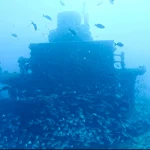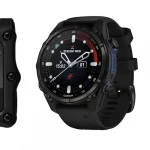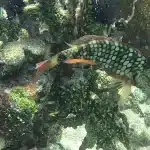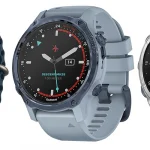Why Key Largo is the Perfect Diving Destination for Families
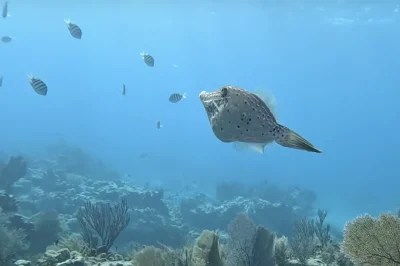
Table of Contents
- Why Key Largo is the Perfect Diving Destination for Families
- Exploring Iconic Dive Sites: Family Edition
- The Snorkeling and Diving Combo: A Seamless Family Adventure
- Avoiding the Top Mistakes of Family Diving Trips
- Trends in Snorkeling: What’s New for Families?
- Comparing Florida’s Dive Spots: Why Key Largo Stands Out
- Safety First: Ensuring a Secure Family Diving Experience
- The Future of Family Diving Trips: What to Expect
Introduction
Explore how our unique snorkeling and diving setup in Key Largo offers an unparalleled experience for families. Combine the thrill of underwater adventure with quality family time on a single boat trip, ensuring memories are made together.
Why Key Largo is the Perfect Diving Destination for Families
Exploring Iconic Dive Sites: Family Edition
Key Largo is renowned for its world-class dive spots, offering a unique blend of adventure and accessibility that appeals to families diving together. Two of the most iconic sites—the Christ of the Abyss statue and the USS Spiegel Grove wreck—represent distinct experiences catering to different skill levels and interests.
Christ of the Abyss – A Shallow Dive for All Ages
The Christ of the Abyss statue is located in the Key Largo Dry Rocks area, resting at a depth of around 25 feet, making it an excellent choice for families with beginners and younger divers. This impressive 9-foot bronze statue depicts Christ offering a blessing underwater and serves as a symbol of peace and marine conservation. Due to its relatively shallow depth and sheltered location within the John Pennekamp Coral Reef State Park, it offers gentle currents and good visibility, reducing the stress often associated with deeper dives.
Families can enjoy guided snorkeling or scuba diving tours to see this memorable monument up close. The site also presents opportunities for underwater photography, creating lasting memories. Additionally, the proximity to shore and the supportive environment make it ideal for divers of all ages and certification levels.
USS Spiegel Grove – An Advanced Adventure for Experienced Divers
The USS Spiegel Grove, a massive 510-foot Navy ship intentionally sunk in 2002 to serve as an artificial reef, offers a dramatically different dive experience. Its depth ranges from approximately 65 feet to 130 feet, which requires advanced certification and experience due to the complexity and current conditions around the wreck.
This site attracts seasoned divers eager to explore the vast interior and abundant marine life, including large goliath groupers. Because of its depth and the occasionally strong currents, the USS Spiegel Grove dive is not recommended for families with young or inexperienced divers. Planning a visit here should only be considered for those with adequate training and proper dive planning.
Family-Friendly Dive Planning Tips
- Choose Appropriate Sites: Favor shallower reefs such as Molasses Reef, North Dry Rocks, and Carysfort Reef. These areas generally range from 18 to 35 feet deep, offer vibrant marine ecosystems, and are well-suited to family groups with varying skill levels.
- Check Certifications: Ensure all diving members have suitable certifications matching the site difficulty, with most family-friendly dives accessible to Open Water certified divers.
- Use Reputable Operators: Opt for dive operators that specialise in family experiences with safety protocols, kid-friendly dive plans, and education on local marine life.
- Supplement with Educational Activities: Incorporate visits to places like the History of Diving Museum, providing interesting backstory and off-water learning for all ages.
- Safety First: Always review local dive conditions, currents, and weather prior to any dive; consider short boat rides to more accessible reefs to minimise fatigue for younger family members.
By combining iconic sites like Christ of the Abyss with more accessible reefs and thoughtful planning, families can share a memorable underwater experience in Key Largo without compromising safety or enjoyment.
Exploring Iconic Dive Sites: Family Edition
Debunking Common Myths About Combining Snorkelling and Diving on the Same Boat
One prevalent misconception is that snorkelling and scuba diving cannot be conducted simultaneously from the same vessel because their requirements differ too greatly. However, this is far from the truth. Many operators in Key Largo and elsewhere successfully run combined snorkelling and diving trips by strategically separating the two activities.
Another myth is that difficulties snorkelers face in equalising pressure during quick underwater descents preclude them from adapting to scuba diving. In reality, the equalisation techniques — such as gently pinching the nose and blowing — are the same for both activities. The key difference lies in the pace; snorkelers often plunge quickly, making equalisation feel more challenging, while scuba divers descend gradually, which eases pressure adjustments. With proper guidance, many snorkelers can transition smoothly to diving.
How a Single Vessel Efficiently Accommodates Both Snorkelling and Diving
Efficiently running snorkelling and diving on the same boat revolves around thoughtful planning and safety management. Here are key strategies:
- Depth Zoning: Snorkelers stay in the upper 10 to 20 feet of water where marine life is abundant and accessible without complex gear, while divers explore deeper reef structures typically 20 feet or more below. This depth separation minimises crowding and ensures everyone enjoys their experience safely.
- Buddy Systems and Safety Protocols: Both snorkelers and divers use buddy systems to watch out for each other. Dive flags mark the boat’s location in the water, alerting other vessels. Pre-entry checks help confirm gear readiness and participant comfort.
- Structured Entry and Exit Techniques: The “giant stride” entry from the boat’s platform allows both snorkelers and divers to enter the water calmly and efficiently. Partial inflation of BCs or snorkel vests before entry aids buoyancy control, and securing masks and regulators reduces gear loss.
- Operator Expertise and Equipment: Opt for local Key Largo tour operators who specialise in combined trips and can provide appropriate gear for all ages and skill levels. They conduct thorough briefings tailored to the mix of activities, enhancing comfort and safety for families.
This integrated approach enables families to share a cohesive adventure without splitting groups, ensuring everyone—from the youngest snorkeler to the most experienced diver—enjoys the rich underwater world cohesively and safely.
The Snorkelling and Diving Combo: A Seamless Family Adventure
Avoiding Common Mistakes on Family Diving Trips in Key Largo
Family diving adventures in Key Largo are memorable but can be undermined by easily avoidable errors. Awareness and preparation tailored to the whole family’s needs foster safer, more enjoyable experiences beneath the waves.
Overlooking Child-Specific Safety Needs
- Don’t pressure children: Forcing kids to dive before they are ready can lead to anxiety or unsafe behaviours.
- Proper gear fit: Use child-sized equipment like regulators and buoyancy compensators to fit their developing bodies and reduce strain or discomfort.
- Depth and duration limits: Keep dives shallow (e.g., 10–15 metres max) and relatively short to accommodate children’s physiological limits and reduce risks related to cold exposure or fatigue.
Solution: Treat children as individuals, prioritising fun and comfort while monitoring for signs of cold, tiredness, or stress to ensure positive experiences.
Disregarding Essential Surface Intervals
- Skipping intervals between dives: Rushing into consecutive dives can heighten the risk of decompression sickness, particularly with Key Largo’s deeper wreck sites.
Solution: Adhere strictly to dive computer-recommended surface intervals, ensuring adequate rest between dives, especially for younger divers.
Exceeding Certification and Depth Limits
- Attempting advanced wreck dives: Iconic wrecks such as the USS Vandenberg require advanced certifications beyond open-water levels.
- Risk of nitrogen narcosis and overexertion: Diving outside certified limits can lead to disorientation or accidents.
Solution: Select dive sites appropriate to every family member’s certification level. For families with young or novice divers, opt for protected coral reefs like those in John Pennekamp Coral Reef State Park.
Neglecting Pre-Dive Equipment Checks
- Skipping buddy checks: Assuming gear is ready can lead to critical failures underwater, especially with rented or unfamiliar gear.
- Overlooking regulator and BCD testing: Problems with air delivery or buoyancy can escalate rapidly if not noticed before entry.
Solution: Implement mandatory double buddy checks before every dive, including testing regulators, inflating BCDs, and verifying weight systems to guarantee functioning equipment.
Rushing Descents and Ascents
- Rapid depth changes: Descending or ascending too fast is a common cause of barotrauma and decompression sickness.
Solution: Maintain slow, deliberate descents with frequent equalisation every 5–10 feet, and controlled ascents that include a safety stop at 5 metres for 3–5 minutes, helping off-gas nitrogen safely.
Skipping Dive Planning and Emergency Preparation
- Ignoring local conditions: Currents, tides, and weather can be unpredictable in Key Largo’s waters and should never be overlooked.
- Failing to set emergency protocols: Families need clear plans for situations like separation, air emergencies, or injury.
Solution: Prior to diving, thoroughly research each site’s conditions, establish clear communication signals, outline emergency procedures, and familiarise everyone with the nearest recompression chamber and emergency contacts.
By mindfully addressing these common pitfalls, families visiting Key Largo can transform their dives into safe, enriching underwater experiences that cater to the unique needs of each family member.
Avoiding the Top Mistakes of Family Diving Trips
Trends in Snorkelling: What’s New for Families?
Recent innovations in snorkelling equipment have significantly enhanced family-friendly experiences, making it easier and more enjoyable for all ages to explore underwater environments like those surrounding Key Largo. Several key trends and advances stand out in 2025, reflecting increased attention to comfort, technology, sustainability, and convenience.
Full-Face Masks with Enhanced Comfort and Visibility
The advent of full-face snorkelling masks marks a major leap forward. Products like the Qinux OceanLook provide a full-face design that enables natural breathing through both nose and mouth, eliminating the discomfort of traditional snorkels. Their wide 180-degree panoramic views give families exceptional underwater visibility, helping beginners and children stay engaged and relaxed while snorkelling. Leak-proof seals make these masks safer for novice snorkelers and help build confidence for family members who may be trying snorkelling for the first time.
Smart Technology Integration
Integration of smart technologies in snorkel gear is a growing trend. Some masks now come equipped with Bluetooth communication systems, allowing family members to stay in touch underwater and share their discoveries in real-time. Advanced models also incorporate augmented reality (AR) displays that can overlay information about marine life, underwater maps, and even safety alerts like depth and water temperature. These features enhance group coordination and overall experience, especially for families with older kids and tech-savvy members.
Eco-Friendly Materials and Modular Designs
Environmental responsibility is increasingly shaping snorkelling gear design. Many manufacturers are shifting to sustainable production, using recycled plastics and biodegradable components for masks, fins, and snorkels. Modular designs are becoming popular too, allowing easy repair and parts replacement, which extends equipment lifespan and reduces waste—an important consideration given Key Largo’s delicate marine ecosystems.
Portability and Family-Focused Adjustability
Family snorkelling equipment emphasises lightweight, collapsible, and easily adjustable gear to accommodate users of different ages and sizes. Features like quick-release buckles and adjustable fins ensure that gear can be shared among family members or quickly customised for comfort. Compact, travel-friendly packaging with foldable masks and snorkels helps families travelling to destinations like Key Largo manage their gear effortlessly.
Premium Tour Packages with Enhanced Equipment
To simplify logistics, many snorkelling tour operators in Key Largo now include premium equipment in their family packages. These bundles often offer access to the latest smart masks, underwater cameras, and safety gear—removing the need for families to invest heavily in their own gear and ensuring a high-quality and safe snorkelling adventure for all ages.
Underwater Photography and Recording
Capturing memories underwater is easier than ever with action cameras and mask-integrated mounts designed for family use. These devices enable snorkelling groups to record and share vivid underwater footage, making the experience more interactive and providing lasting mementoes of a family’s Key Largo adventure.
These innovations collectively make snorkelling a more accessible, enjoyable, and environmentally responsible activity for families visiting Key Largo, promising memorable experiences for adults and children alike.
My Favorite Dive Computers
I have compared the 3 top diving computers for each category to help making the right choice easier:
Trends in Snorkelling: What’s New for Families?
Coral Health and Marine Biodiversity
Key Largo, nestled within the Florida Keys National Marine Sanctuary, boasts superior coral health compared to most other Florida dive spots due to its protected status. This sanctuary hosts North America’s only barrier coral reef system, featuring extensive, vibrant reefs like Molasses Reef and Pickles Reef known for robust coral growth. Such protection helps sustain diverse and thriving marine ecosystems, despite ongoing threats like climate change and storms.
In contrast, locations like Miami and West Palm Beach generally experience more fragmented and shallower reefs, often stressed by coastal development and nutrient runoff, which affects coral resilience and biodiversity. Key Largo’s reefs teem with iconic species such as goliath groupers, nurse sharks, sea turtles, and eagle rays. Deeper wreck dives like Spiegel Grove and Duane further enrich biodiversity, attracting pelagic fish and sharks, including occasional hammerhead and tiger sharks.
Dive Site Accessibility and Water Visibility
Dive sites in Key Largo primarily require boat access, offering over 50 dive locations that range from shallow reefs (18–40 feet) suitable for all skill levels, to deep wrecks reaching 140 feet or more. This variety provides a broad spectrum of dive experiences. While Key West shares similar boat-based access, it offers fewer wrecks and dive sites overall. Miami and West Palm Beach, though not as well documented, tend to provide a mix of shore and boat access but do not match the extensive reef or wreck options of Key Largo.
Visibility in Key Largo is typically excellent due to its offshore reefs and consistent currents, which create clear water ideal for underwater photography and exploration. Seasonal fluctuations affect clarity, but shallow reefs usually enjoy ample natural light. Key West’s visibility tends to be good yet more variable because of its closer proximity to mainland waters. Miami and West Palm Beach often have good visibility nearshore but lack the consistent offshore clarity Key Largo is known for.
Unique Underwater Features of Key Largo
- World-class wreck diving: The Spiegel Grove, at depths from 65 to 140 feet, is among the largest artificial reefs in the western hemisphere, providing unique exploration opportunities not found frequently elsewhere in Florida.
- Ecologically rich coral formations: French Reef offers cavernous swim-throughs teeming with diverse species like moray eels, grouper, and schools of tropical fish, creating dynamic and varied dive experiences.
- Range of dive site options: From shallow reefs ideal for families and beginners to deep wrecks that attract advanced divers, Key Largo caters to a wide audience.
Comparatively, Key West is famed for its dense coral gardens at sites like Western Dry Rocks but offers fewer wrecks. Miami and West Palm Beach, while accessible, do not supply the same depth of coral reef development or wreck variety.
Summary
Key Largo distinguishes itself among Florida’s dive locations with its unparalleled combination of healthy reefs, diverse marine life, extensive dive sites, excellent visibility, and unique underwater sites such as the Spiegel Grove wreck. While Miami and West Palm Beach might offer convenient access and shore diving opportunities, they generally cannot compete with the rich biodiversity and protected, well-maintained reef environments of the Florida Keys, with Key Largo as a standout destination for all types of divers.
Comparing Florida’s Dive Spots: Why Key Largo Stands Out
Core Safety Protocols for Family Diving and Snorkelling
Ensuring a safe and enjoyable underwater experience in Key Largo begins with adhering to essential safety protocols. The Buddy System is fundamental—children should always be paired with a certified adult or experienced instructor, never left to explore unsupervised. This helps prevent panic and ensures quick assistance if needed. Before entering the water, conduct thorough Pre-Dive Checks of all equipment, focusing on proper fit and functionality, especially for children’s gear to avoid leaks, discomfort, or distractions underwater. Planning the dive with attention to the youngest or least experienced family member’s abilities is crucial—consider limiting depth, choosing gentle currents, and scheduling frequent surface intervals to keep everyone comfortable and safe.
Proper Gear and Instruction
Key Largo offers specialised gear for families that helps maximise comfort and safety. Children’s snorkels, masks, and fins should be appropriately sized—hand-me-downs or adult gear won’t provide the right seal and may increase risk. Investing in well-fitting equipment tailored for kids reduces mask fogging and breathing difficulties. During instruction, maintain careful oversight with instructor-to-child ratios of 1:1 for kids under 12, and 1:2 for teens 12–15 years old. Additionally, perform a health screening before diving—any signs of respiratory or ear issues mean it’s best to postpone, avoiding potential complications underwater.
Effective Snorkelling Practices and Environmental Respect
Training in controlled breathing is vital; encourage slow, steady inhales and exhales through the snorkel. Employing the “3xH” rule—keeping head, hips, and heels aligned at the surface—helps minimise effort and conserves energy. Families should be reminded to respect marine life: avoid touching coral or disturbing fish to preserve the fragile ecosystem. Keeping a safe distance protects both the environment and swimmers from injuries or stress on wildlife.
Top Family-Friendly Dive and Snorkelling Sites
- John Pennekamp Coral Reef State Park – Known for shallow, calm waters, making it ideal for beginners and young snorkelers. The park offers guided tours that increase safety and educational value.
- Molasses Reef – This site features vibrant coral formations and diverse marine species within accessible depths, perfect for families to explore together with minimal risk.
Additional Safety Measures
- Hand Signals: Establish clear, simple hand signals for communicating “okay,” “help,” or “ascend” before entering the water to maintain communication underwater.
- Emergency Kit: Carry a well-stocked first aid kit including child-appropriate medications and supplies to handle minor injuries or motion sickness symptoms.
- Stay Informed: Keep up-to-date with local weather, tides, and water conditions to avoid hazardous situations.
By integrating these comprehensive safety practices, families visiting Key Largo can confidently share the underwater adventure, ensuring each member stays secure while creating unforgettable memories.
Safety First: Ensuring a Secure Family Diving Experience
Emerging Innovations Shaping the Future of Family Diving Trips
The evolution of family diving experiences is increasingly defined by the fusion of cutting-edge technology and sustainable practices, creating opportunities to engage divers of all ages while preserving marine environments. As families plan trips that bring everyone together—from beginners to seasoned divers—the industry is responding with innovations that enhance safety, accessibility, and environmental stewardship.
Technological Advancements Enhancing Safety and Engagement
- Lightweight, User-Friendly Gear: The introduction of systems like the Avelo scuba setup, which weighs around 40 pounds and eliminates traditional weight belts, simplifies buoyancy control for divers across all skill levels. This makes diving more accessible, especially for younger or older family members, encouraging participation without cumbersome equipment challenges.
- Integrated Dive Computers and GPS: Modern dive computers now incorporate GPS tracking, allowing dive leaders and family members to monitor group locations in real-time. This is crucial during open water excursions to maintain safety and coordination, reducing concerns about separation in large or diverse groups.
- Wearable Health Technology: Devices such as the Apple Watch Ultra support underwater heart rate monitoring and environmental tracking, enabling parents and dive guides to stay informed about individual health metrics during dives.
- AI-Powered Marine Life Tracking and Education: Artificial intelligence is increasingly deployed in marine conservation and diving apps, providing families with real-time insights about the underwater ecosystem, fostering environmental awareness and interactive learning experiences.
Innovations Driving Environmental Sustainability
- Eco-Friendly Dive Operations: Dive centers are adopting digital management software like Bloowatch, which reduces paper usage by streamlining reservations and trip planning. This operational efficiency also extends to managing boat capacity, optimising fuel use, and minimising ecological footprints.
- Reef-Safe Equipment and Practices: The use of biodegradable sunscreens and wetsuits, alongside eco-conscious materials in gear production, helps limit harmful chemical and physical impacts on reef systems. Moreover, electric-powered dive boats and eco-mooring systems protect sensitive coral habitats by reducing emissions and preventing anchor damage.
- Conservation-Focused Diving Experiences: Many operators now integrate environmental education into their trips, including virtual or in-person workshops that highlight reef conservation, marine biodiversity, and responsible diving practices. This approach empowers families to contribute positively to the preservation of diving sites.
Anticipated Trends for Family Diving Trips
- Multigenerational Customisation: Dive centres are designing experiences that cater to varied age groups and skill levels, offering refresher courses for adults and fun, safe snorkelling alternatives for younger children or non-diving family members.
- Personalisation through Technology: Advances may soon enable real-time underwater communication, immersive virtual dive guides, and customisable equipment fitting, increasing accessibility and enjoyment for families with diverse needs.
- Enhanced Environmental Monitoring: Expansion of AI-driven marine ecosystem health tracking will allow dive operators and guests to participate actively in conservation efforts, fostering a bond between recreation and stewardship.
Incorporating these innovations means that future family diving trips in destinations like Key Largo will prioritize safety, immersion, and sustainability, ensuring that the wonder of underwater exploration remains vibrant and accessible for generations to come.
The Future of Family Diving Trips: What to Expect
Top Family-Friendly Snorkelling and Diving Spots in Key Largo
When exploring Key Largo with your family, certain snorkelling and diving locations stand out for their accessibility, marine diversity, and facilities tailored for all ages. These spots provide varied experiences that can accommodate both beginners and more experienced young divers, ensuring the whole family stays engaged and together.
John Pennekamp Coral Reef State Park is a premier choice for families, as it offers sandy-bottom beaches with shallow waters ideal for younger kids and beginner snorkelers. Its protected environment lets families explore vibrant coral formations and marine life safely close to shore. Additionally, the park offers boat tours that take you to more extensive reef areas and the iconic Christ of the Abyss statue at Dry Rocks. This site provides a balance of guided experiences and open-water discovery that suit mixed skill levels.
- Boat tours typically last about 2.5 hours, with options for guided snorkelling excursions.
- The calm waters near the shore allow young children to gain confidence before venturing further.
Grecian Rocks is another excellent family-friendly site, known for its quieter atmosphere and impressive coral gardens. Its shallow reefs are rich with sea turtles and colourful fish, perfect for families seeking a peaceful snorkelling adventure away from crowds. The easier conditions make it suitable for older kids and novices alike.
Founders Park, located just a short drive from Key Largo in Islamorada, offers a man-made beach setting with calm, clear waters ideal for practice snorkelling. Families benefit from amenities like pools, playgrounds, and shaded picnic areas, making it a great spot for a full-day outing where non-swimmers and children can enjoy themselves comfortably.
Dry Rocks is famous for the submerged Christ of the Abyss statue, a popular dive destination accessible by boat. Though it is better suited for families with some diving experience, snorkelers can enjoy the surrounding coral formations and vibrant marine life in relatively shallow areas nearby.
For families that include non-swimmers or members who prefer not to enter the water, consider alternatives like glass-bottom boat tours. Operators such as Slate’s Atlantis Dive Center provide tours that allow everyone to witness the reef’s beauty from the boat, ensuring that no one misses out on the underwater wonders.
While snorkelling sites dominate the family-friendly options, many dive centres offer introductory dives and tailored experiences for young or novice divers, often at spots like Molasses Reef. It’s always best to consult local dive operators about safety and age requirements to ensure suitability for your family’s experience level.
- John Pennekamp Coral Reef State Park: Beginner-friendly beaches, guided tours, and iconic dive sites.
- Grecian Rocks: Quiet coral gardens and sea turtle habitat in shallow waters.
- Founders Park: Calm practice waters with family amenities (nearby in Islamorada).
- Dry Rocks: Famous for the Christ of the Abyss statue, ideal for more experienced families.
- Glass-bottom boat tours: Perfect for mixed-ability groups including non-swimmers.
By selecting spots with a spectrum of underwater terrain and comfort levels, families can fully enjoy the underwater ecosystems of Key Largo together, making unforgettable memories that cater to every member’s interests and abilities.
Sources
- Florida Scuba Diving – Family Scuba Diving in Key Largo
- Chronic Wanderlust – Scuba Diving Key Largo
- Florida Keys – Key Largo Dive Sites Overview
- Mercury Marine – 7 Tips for Snorkeling and Scuba Diving From a Boat
- Fodor’s Travel Community – Snorkeling on a Combined Snorkel & Scuba Boat
- Dive Central Gili – Scuba Diving Myths Debunked
- Different Dive – 5 Mistakes to Avoid at All Costs with Children on Diving
- Divers Alert Network – 7 Mistakes Divers Make and How to Avoid Them
“`

